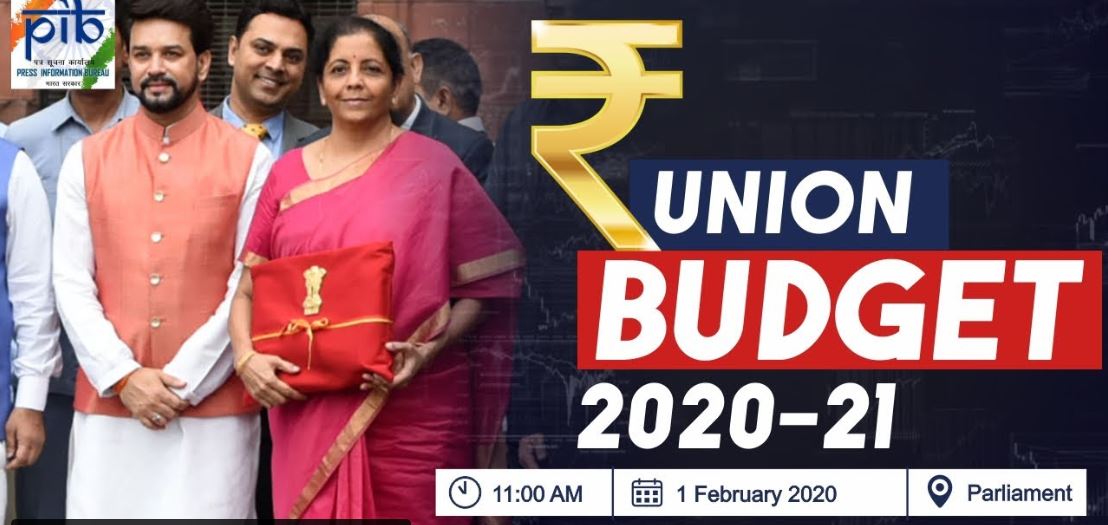Is this Budget sufficient to achieve 5 Trillion Economy?

The budget 2020-2021 which was recently presented in the Parliament by The Finance Minister, Nirmala Sitharaman was built around themes like Aspirational India, economic development, and Caring Society. At a time when the economy is going through a tough phase of cyclical and structural slowdown with a decrease in overall consumption with India witnessing the lowest growth rate in the last seven quarters. There were high expectations from the Budget. The Budget, however, turned out to be a mixed bag. It unveiled a set of positive reforms to boost the economy while addressing challenges in various sectors. Let’s see what its announced initiatives are and the role it can play to make India fall into a 5 trillion dollar club in a span of a couple of years.
The Agriculture Sector Reforms
With Agriculture accounting for about 18% of GDP while providing employment to 50% of the population, the sector still reigns supreme and no government can afford to underestimate its role in the economic growth of the country. The Union Budget 2020- 2021 unveiled a 16 point plan to revive the agriculture sector and improve productivity. The government focused on comprehensive reforms for the farmers, fisheries, and dairy sector aligned with PM’s vision of doubling the farmer’s income by 2022. Schemes like Annadata converted into Oorjadata will prove beneficial in the long run for earning of subsidiary incomes for farmers. The focus was kept on Improvement in productivity, well developed backward and forward linkage and integrated farming systems which when coupled with strong E- Market exhibits a direct relationship with growth prospects in the FMCG industry, which has witnessed slower growth last year because of the decrease in rural consumption demand and rise in inflation. The initiative “One District, One Product scheme”, to strategically convert every district as an export-oriented unit will not only help in providing employment opportunities to the locals but will also meaningfully assert social inclusion and “ Sabka Sath Sath Vikas, Sabka Vishvas” campaign. This will also help in achieving a higher growth rate and the broader target of a 5 trillion dollar economy. However, Concerns are being over the fund allocation for the income-generating schemes which are relatively lesser this year like MNREGA, PM Kisan amongst others. To spur consumption, it is important that money is put in the hands of the rural population to provide a ripple effect on economic growth.
Focus on MSME, Exports, and E-Governance
The Union Budget proposal of an Investment clearance cell, NIRVIK scheme, restructuring of debt for MSME, the abolition of the Dividend Distribution Tax should be welcomed. This will lead to the creation of more jobs and self-employment opportunities for the youth of the country. MSMEs, which are the lifelines of our country, has welcomed the Budget announcements. NIRVIK scheme initiated will remove the roadblocks faced by MSMEs and will encourage exporters to explore global opportunities. Further, the abolition of the Dividend Distribution Tax is a good step that will make India’s image as an attractive investment destination. Also, the Digitalisation of duties and taxes, simplification of GST, developing linkages through online platforms in the agriculture sector through E-NAM, proposal of online graduate courses as discussed in the Union Budget will go a long way in curbing red-tapism, procedural delays and eliminating ghost beneficiaries while fulfilling PM’s vision of “Minimum Government, Maximum Governance”.
Entrepreneurship and Skill Development
The Budget this year saw a reduction in terms of allocation of money in the “Entrepreneurship and Skill Development” category. This could act as a discouragement to entrepreneurs and develop negative market sentiments among the newly born startups. Despite the implementation of various encouraging schemes like Atal Innovation Mission, Startup India, Mudra Yojana, startups in India are lagging in terms of funds, guidance, restrictive government policies, lack of research and development about the market and ease of doing business. For a nation like India with a large number of youths, it is important that their zeal and enthusiasm are constructed in a positive way. They should be provided an opportunity to convert their idea into a business to grow and sustain in the market. The government needs to take some bold steps like Pumping of more money to encourage startups, providing adequate Research and Development facility, furnishing mentorship, providing an ambiance to promote startup culture by ensuring ease of doing business. Reaping the benefits of India’s vast demographic dividend is crucial to achieving the Nation’s target of achieving a 5 trillion dollar economy when it turns 75.
Infrastructure, the financial sector, and others
The budget also focussed on infrastructure, the financial sector and brought a series of amendments in the legislative acts for efficient delivery of public services, rooting out black money, demolishing corruption while eliminating “Ghost Beneficiaries” and formalization of the economy
By 2030, India will have the largest working-age population. In this dynamic age digital technologies of Artificial Intelligence, Cloud Computing, Robotics, and Neural Networks. India is witnessing an inconsistency between the supply of skills and demands. The budget hence discusses, the recommendation of a one-year internship for fresh engineers with urban local bodies to bridge skill gaps and boost employability.
Way Forward
As per Niti Ayog’s Strategy for India Report, “Development must become a mass movement” in which every Indian recognizes her role and also experiences the tangible benefits accruing to her in the form of better ease of living. Economic growth should be coupled with balanced regional development across all the sectors and all the states. India is currently a 2.8 trillion dollar economy, It needs to have a double-digit growth to realize its target of reaching a 5 trillion mark. For this to happen, the Government must take some bold steps to revive the economy.
Like Our Page To Get Blogs & Market Updates



